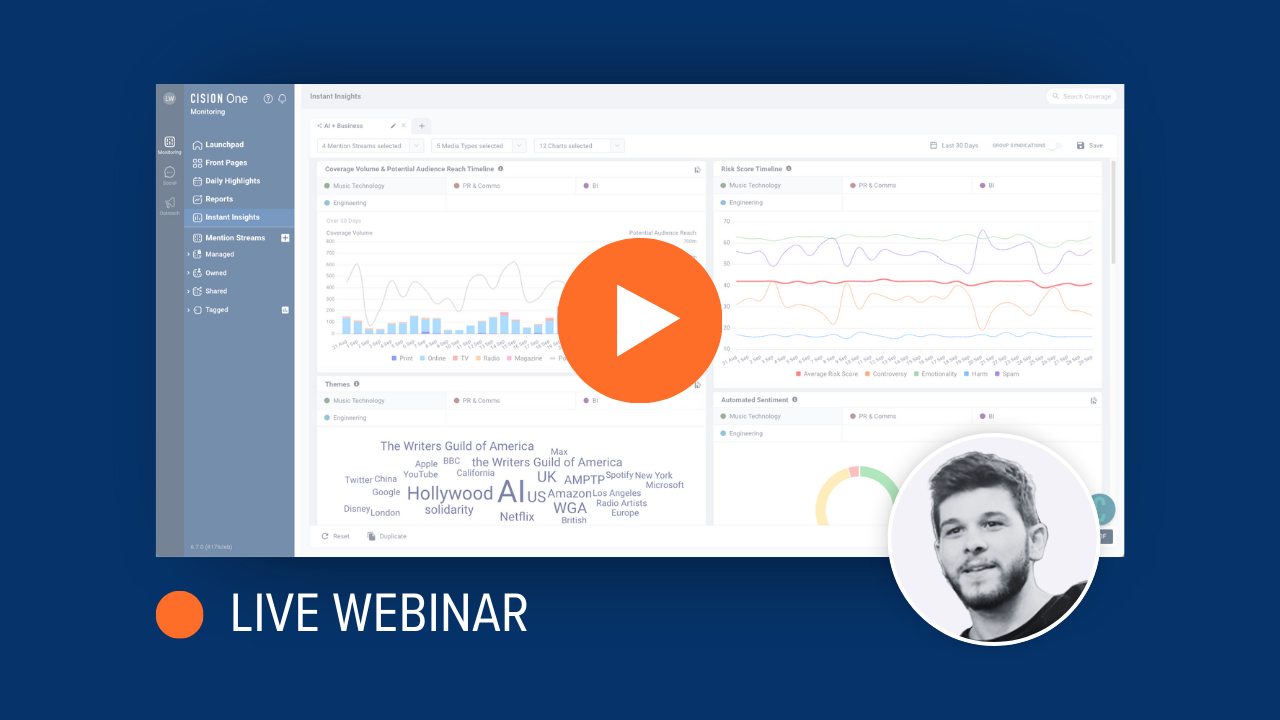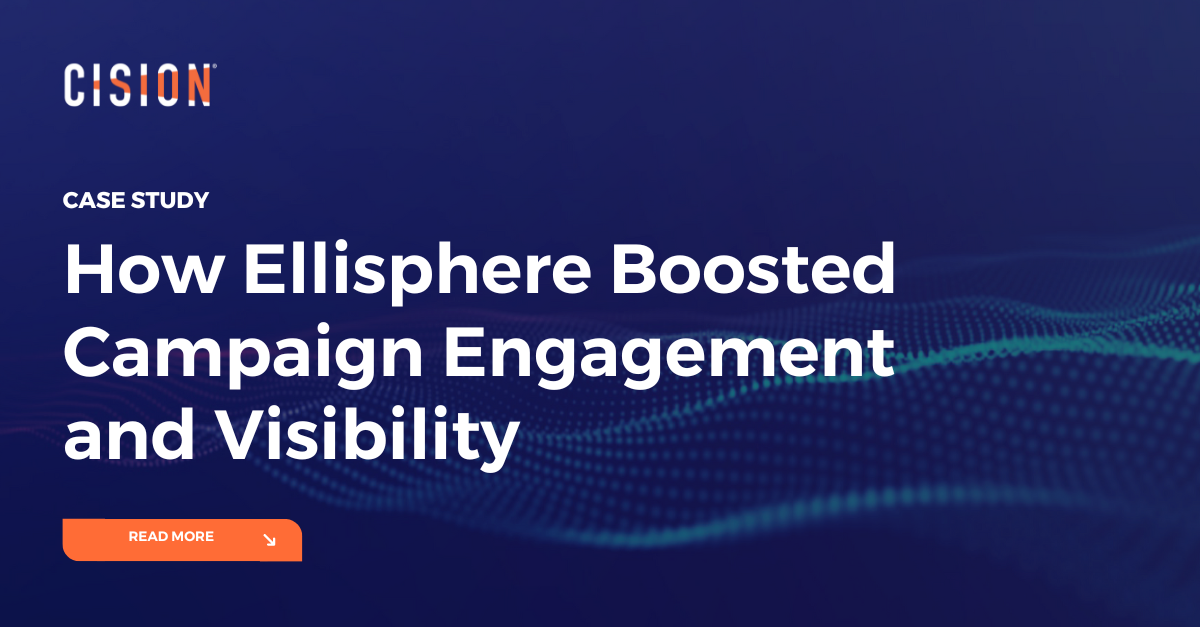This will be a deep-dive into the Business Decision Maker audience profile.
The focus will be on giving communications professionals the tools and knowledge they need to make actionable decisions based on this information, and highlighting the potential of harnessing this data effectively.
One of the recurring, yet often overlooked, barriers to crafting a strong communications strategy is obtaining a deep view of the target audience profile. The answer to the question “How much do we actually know about our client?” is sometimes surprisingly vague.
That’s especially true when we rely on broad metrics to build an audience profile, such as:
- age
- demographics
- income segment
These might define essential parameters, but these are not to be confused with insight into what makes our customers “tick”. We need to distinguish between the data points that show us what our audience looks like and those that actually reveal a clear picture of why and how they engage with content and how to pivot your comms strategy accordingly.
Dig deeper for more detail
That means looking deeper than the surface level and aiming for a more detailed view of audience attitudes, perceptions, and journeys.
So how do communications teams deploy these insights to evolve a more effective communications strategy, to help them:
- build a bigger, richer profile of their audience;
- identify the data points that matter, even when audiences are fragmented?
Recent research by Cision Insights incorporates data from GWI to enrich Cision's rich media consumption and engagement data to better understand the Business Decision maker audience, illustrating how comms teams can see the big picture.
The profile provides an example of how marketing and communications professionals can get a clearer understanding of any audience’s needs, self-perception, and behaviour. With this insight at their fingertips, teams can develop more precise and targeted strategies to reach their audiences.
Unleash the complete insight from data
These are the tools that turn digitisation, social media, and audience fragmentation into an opportunity, not an obstacle. They allow comms professionals to explore fresh avenues, gain a deeper understanding of their customers and rely less on assumptions about audiences based solely on what media they consume.
Crucially, they explore the context behind consumer decisions to a greater degree. They recognise, for example, that audiences (in this case business decision makers) divide their time between personal and professional duties, and draw their influences from sources that may not necessarily fit into neat sector-specific silos. Ultimately, they give data a human face.
So where should we be looking for enlightenment about our target audiences? The insight methodology employed by Cision focuses on the following essential metrics.
Demographics – adapting the message according to gender and age
The power of digital channels compared to print or broadcast is that they allow communications teams to break free of core demographics as the main targeting tool.
Because teams can collect a wide variety of data based on behaviour, sentiment, and engagement, they can look deeper than simply "who" the audience is. That said, demographics should not be overlooked entirely. They are the starting point from which other metrics evolve.

Segmenting messages by gender
The audience report reveals that the business decision maker target audience is still overwhelmingly male (61%), although distribution among age groups is more balanced.
With this insight at their fingertips, comms teams might spot an opportunity, for example, to distance themselves from the noise by crafting campaigns that target the 39% of decision makers who are not male. The tone and messaging could reflect the challenges many female decision makers face when dealing with C-suites that are male-dominated and articulate a vision for a more equal, equitable decision-making process.
We should be wary of making any assumptions about what content appeals to a specific gender or age group, and recognise that there are often notable anomalies in how demographic age groups behave, but we still need this fundamental snapshot of who our audience is.
In turn, this can allow communications teams to target the publications and channels where they are more likely to find their audience or subsets of their audience.
Changing the channel
This raw data can be mapped against insight we also know about the popularity of channels and devices per age group to improve targeting, for example. In this case, the dominant cohort (male, aged 34 to 44) might be ripe for snackable video content, and messaging should appeal to an audience that is hitting its professional prime.
We also need to know what the emotional limitations are for each age group. Content that wants to engage Gen Z or Millennial audiences should appeal to their forward-facing professional ambition, whereas campaigns that target mature audiences should support them in building out their legacy.
Education and Income Segments and their messaging triggers
Audience education data is valuable in establishing where comms teams may need to fill in knowledge gaps, while income data illustrates the trajectory of an audience (up to a certain point).
The important insight isn't so much in the historical data about what level of education an audience achieved, however. Instead, comms teams need clues about how their audiences best like to absorb new information.
An audience that has "learned on the job" might prefer demos and free trials, for example, whereas those who completed postgraduate or technical qualifications might be more comfortable with self-service white papers and more detail-specific long-form content.
Likewise, income level alone isn't an indicator of an audience's professional buying power, but it does give a hint of what triggers and motivations content should engage on a personal level. The marketing team that gave us the "No one ever got fired for buying IBM" campaign understood this friction perfectly. Successful decision makers can expect to earn more.
News Consumption – finding the most relevant source
Obtaining a complete view of the news consumption of our audience is essential for defining the touch points to reach them.
In the case of business decision makers, they are above average consumers of news and current affairs:
- 56.1% are more interested in news and current affairs than the average consumer
- 66.6% see the internet as an important source of news
When audiences are seeking news across a wide variety of outlets, it's even more important to know how they will find the information they are looking for.
Our research shows that younger business decison makers lean towards engaging on social. Their go-to websites include the likes of Buzzfeed and Vice. Senior-level decision makers, on the other hand, will be more likely to pay for premium, in-depth paywall content and subscribe to publications like the Financial Times.
How can that insight be applied to future campaigns? For a start, it points to numerous opportunities to capture share of voice through both paid and earned media.
Secondly, an audience that actively seeks to stay informed is one that wields influence too. Give decision makers content they can share, boosting their profile in the process, and they can lead a brand towards secondary audiences.
Grabbing your audience's attention
Establishing the news appetite for any audience is a priority benchmark. For audiences with a heavy appetite, content should land in the technical or professional publications they subscribe to, and on the sites that they check regularly.
For less news-hungry consumers, content may need to lead them more gently towards the landing page, perhaps starting with a more lifestyle-oriented hook to capture attention.
Despite legitimate concerns about audience fragmentation and the decline of traditional news, business decision makers are still surprisingly conventional in whom they choose, with the BBC, The Guardian, Sky News, CNN, and Mail Online the recurring favourites.
Nevertheless, they are also likely to supplement their mainstream media with specialist print, online, and broadcast sources, such as International Business Times, Bloomberg, and CNBC.
What then becomes important is engaging with the journalists who are most capable of producing content that will be relevant.
Cision data reveals that different media outlets need to be employed to connect with business decision makers across B2C and B2B organisations.
While the Mail Online is best suited to engage business decision makers selling B2C products, Bloomberg or The Guardian are most effective in reaching out to B2B decision makers.
When to unleash the influencers
In terms of messaging and depth of content, they naturally expect their specialist publications to go into more granular detail than mainstream sources. That's the cue to involve respected influencers and journalists who can bridge the gap from top-level messaging to premium insider content that (often) justifies the cost of a subscription.
This is the traditional end of the spectrum. For other audiences, comms teams may have to include the forums and platforms away from the mainstream that nevertheless carries influence.
Depending on the sector, there may be social media, blogs, or YouTube channels, for example, that serves as the unofficial gatekeepers for evaluating new product or service launches into the market.
Social consumption – where professional and personal collide
Compared to the global average of 147 minutes spent on social media per day, business decision makers are actually relatively light users:
- 47.2% devote less than an hour a day to the task
- 31.4% use social media to catch up on news
- 17.7% use it simply to avoid “missing out” on important events
The example shows that the importance of social media varies enormously across audiences, not to mention the trust and credibility consumers assign to what pops up on their feeds.
Comms teams should dismiss social media as diversion or entertainment at their peril, however. Increasingly, it is the most important source for authentic, exclusive, niche content. Depending on the target audience and sector, campaign managers will have to decide whether to position social media as the spearhead for messaging or as a complementary channel for building a wider audience for print or broadcast content.
Why brands must reach across platforms
The business decision maker demographic is similar to the wider online community in favouring Facebook (78.7%) and Instagram (60.9%) as the most popular channels, although unlocking the professional benefits of Twitter (54.8%) and LinkedIn (47.7%) is more clearly defined among business decision makers.
The data shows that marketers should be wary of assuming that consumers in a specific sector (eg. business) can only be reached through the media associated with that audience, however.
We know that every social media user typically curates a portfolio of platforms - 8.4 accounts per person on average - so the difficulty is not so much in picking the right one as understanding the mindset of the audience on each one.
For some platforms (eg. Instagram), audiences are looking for ideas. For others (such as LinkedIn) they are looking for content that they can share with their network to enhance their status.
Attitudes and Describers – audience self-perception
It may not always tally with the actual behavioural and engagement data, but the way an audience describes itself at least shows marketers where customers want to be – and may give clues as to how to reach that destination.
The way this demographic sees itself is particularly illuminating, and by no means a neat correlation to the way marketing professionals often project their assumptions:
- 60.9% describe themselves as affluent
- 33.6% see themselves as traditional
- 30.9% see themselves as confident
- 26.7% perceive themselves as ambitious
- 40.9% refer to themselves as career-focused
Looking beneath the surface
Communications teams know only too well that the way audiences portray themselves outwardly and consider themselves introspectively rarely match.
Consequently, reports need to dive deep into the aspirations, reservations, and even primal envy or greed behind a decision. In turn, that will influence the degree to which social proof is a decisive factor, or whether an endorsement from a respected influencer or celebrity is required.
Pain points to trigger
Business decision makers have their triggers too. 54.8% describe themselves as price-conscious, but only 19.7% regularly expect brands to offer customised solutions.
While this primary data is important to collect, it should be corroborated with secondary data to test the veracity. We cannot take it for granted, for example, that a consumer who describes themselves as price-conscious automatically chooses the cheaper option. Other factors may ultimately matter more.
Where should brands focus messaging for consumers in the buyer journey? In the case of business decision makers, there’s a strong showing of early adopters, with 17.1% saying they would buy new tech as soon as it was available.
For other audiences, however, there may be a far higher proportion of laggards, and the time between awareness and decision may be much longer and require a greater complexity of touch points.
Communications teams would be wise to appeal to the emotional triggers as well as financial and professional. In the research, there’s the illuminating statistic that 23.5% of business decision makers feel overworked.
Admittedly, that’s a self-perception, not a proven fact, but it’s an example of the “tiny noticeable details” that brands should look out for when differentiating their messaging.
Even these more subtle signals can help communications professionals understand how to create content around topics & themes that will make their brand resonate with audiences.
Cision can then track this within the news and social media to understand how often your product is discussed, reducing workload and easing processes.
Brands should be asking these questions...
Using the example of the business decision maker data from the above, it's possible to see what marketing professionals can achieve with a richer, more sophisticated set of data points from which to build a communications strategy.
No longer are communications teams restricted to knowing simply “who” their target customer is. They can progress to exploring the “why” and the “how” of the decisions their audience makes about media consumption and purchasing.
In turn, this insight can lay the intelligent foundation for what messages to convey, what channels to prioritise, and what pain points and triggers to appeal to. Cision offers the tools to evolve from descriptive to proactive audience analysis. Brands can unlock a level of insight into their customers that is otherwise out of reach.
Uncover data points that reveal a complete picture of your audience and customise messaging with Cision Insights. Speak to one of our consultants today.
Most Recent Posts
Cision Resources
-
E-books and Guides
Comprehensive how-to guides on strategy and tactics
-
Case Studies
What are other brands doing – and how can we learn from them?
Learn More. Do More. demo new
PR Tips, Case Studies, and Product Updates

[On-Demand Webinar] The Next Generation of Media Intelligence: From Gorkana to CisionOne
Explore CisionOne, a revolutionary media intelligence platform, and the evolution of Gorkana. Learn key features and strategies from Luke Williams, CisionOne Product Marketing Manager. Elevate your media outreach to new heights!

